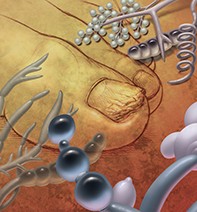Peer Reviewed
Feature Article Dermatology
Nail disease: is it fungal and how should it be managed?
Abstract
Fungal infection accounts for about half of all nail abnormalities. Differential diagnoses include psoriasis, lichen planus and Pseudomonas infection. Treatment usually requires long-term continuous or pulsed antifungal therapy.
Key Points
- Onychomycosis is typically asymptomatic and subclinical, representing a cosmetic problem.
- Dermatophyte moulds are the most common cause.
- Differential diagnoses that should be considered in patients with nail abnormalities include psoriasis, lichen planus and Pseudomonas infection.
- Keeping the feet and toenails dry can help prevent onychomycosis.
- Systemic agents have the highest success rates in treating onychomycosis; they include terbinafine, itraconazole and fluconazole.
- Topical treatments are typically useful only for superficial white onychomycosis and very mild subungual onychomycosis; they include amorolfine, bifonazole, ciclopirox and miconazole.
Picture credit: © Bodell Communications/Phototake/Diomedia.com

